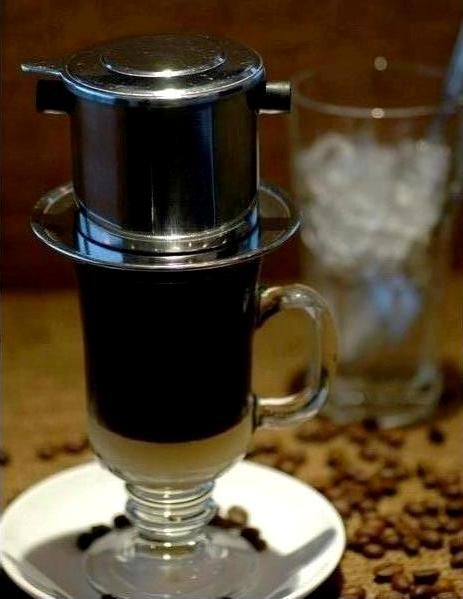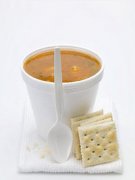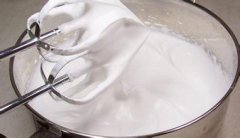Vietnamese Coffee "Didi Jin"
Vietnamese coffee, also known as Didi Jin, has to be ordered 10 minutes in advance. Since French missionaries brought coffee to Vietnam 150 years ago, Vietnam has gradually developed its own unique coffee culture.

The style of coffee in Vietnam lies largely in its brewing process. It is not brewed in a coffee pot, but a special drip-filter coffee pot, followed by an old-fashioned printed glass, just like an hourglass in time. Every drop is used to pass the time. When you do it, put the coffee powder on the drip pot on the cup holder below, press a piece of metal with holes, and then brew it with hot water to let the coffee drip into the cup. When making hot coffee, keep the cup warm in a large bowl filled with boiling water, because it may take three to ten minutes to drip a cup of coffee, and the hot coffee will cool off. Some people like to add a layer of sweet condensed milk under the cup, wait for the coffee to drop into the cup, and then mix the coffee with white condensed milk to drink. If it is black coffee, generally do not give you straws, if there is condensed milk will give you straws. Only those who can bear the patience will wait until a cup of coffee has been dripped, then drink it slowly and appreciate the beauty of slow life.
The following is a description of the production method
Prepare materials:
1. Small mouth pot (the mouth is as thin as possible, it is easy to inject water)
2. Condensed milk
3. Coffee powder
4. Dripping pot
5. Coffee cup (it must be transparent to be authentic, otherwise it will be no fun if you can't see the process)
Production:
1. Add proper condensed milk to the cup and add condensed milk is the characteristic of Vietnamese coffee.
2. Fill the Didi pot with coffee powder and shake it flat.
3. Screw on the pressing plate to press the coffee powder properly. The screws of the pressing plate should be loosened and tightened properly, and it is appropriate to drip in about three minutes.
4. Put the drip pot on the cup, and then pour some water to soak the coffee powder but not drip it. This step is also used in follicular coffee, the technical term "stew".
5. After 20 seconds or so, put about 90 degrees of water, fill it up and cover it.
6. Wait for the coffee to fill the cup slowly.
When drinking, do not stir in a hurry, you can first taste the acidity of black coffee, and then mix it with condensed milk, which can also be added in summer.
Important Notice :
前街咖啡 FrontStreet Coffee has moved to new addredd:
FrontStreet Coffee Address: 315,Donghua East Road,GuangZhou
Tel:020 38364473
- Prev

Soy milk coffee is a new delicious combination of Chinese and Western cuisine.
Soybean milk is a high-fiber food, can enhance gastrointestinal peristalsis function, so that the lower abdomen is no longer protruding. And diuresis and perspiration, reduce the chance of edema, but also take away part of the heat. In addition, soybean milk is also rich in unsaturated fatty acids, which can decompose cholesterol in the body and promote lipid metabolism. Preparation method: 1. Pour half a cup of hot coffee and set aside; heat the soybean milk slightly in the microwave oven, and then heat the heated beans
- Next

The secret of making coffee creamy and creamy
Whipped cream matches coffee no less than milk, sugar and chocolate, but it is not widely used because it is not as easy to get as others, and the cost is high. But if you can learn to make a little cream at home and add it to your coffee, it will definitely make a qualitative leap in both the appearance and taste of your coffee! The first way:
Related
- Beginners will see the "Coffee pull flower" guide!
- What is the difference between ice blog purified milk and ordinary milk coffee?
- Why is the Philippines the largest producer of crops in Liberia?
- For coffee extraction, should the fine powder be retained?
- How does extracted espresso fill pressed powder? How much strength does it take to press the powder?
- How to make jasmine cold extract coffee? Is the jasmine + latte good?
- Will this little toy really make the coffee taste better? How does Lily Drip affect coffee extraction?
- Will the action of slapping the filter cup also affect coffee extraction?
- What's the difference between powder-to-water ratio and powder-to-liquid ratio?
- What is the Ethiopian local species? What does it have to do with Heirloom native species?

